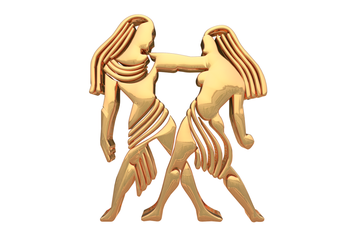Digital twins on the manufacturing menu – with help from the hyperscalers
SOURCE: HTTPS://WWW.IOTTECHNEWS.COM/
NOV 16, 2023
A digital advantage: Architecting colocation data centers with digital twins
SOURCE: DATACENTERDYNAMICS.COM
SEP 04, 2021

Digital twins - accurate 3D representations of data center facilities - can help providers plan big changes and radically reduce their risks, says Future Facilities' Dave King
Power is being devoured like never before. We live in an era of digital on-demand – fuelled by the accelerated adoption of 5G, edge computing and the resulting explosion of the Internet of Things (IoT). As a result, businesses are relying on increasingly diversified infrastructures, and colocation facilities form a crucial part of this ecosystem.

– Agzam, Pixabay
Colocation has long benefited businesses by offering them an alternative to costly and complex maintenance of IT in-house. But for colocation providers themselves, the need to keep thinking about the next innovation is equally important. Whether that’s developments in cooling technology, or providing facilities fit for high-density and mixed-density configurations, colocation data centers need to evolve quickly and with the absolute minimal risk to uptime.
That’s why forward thinking colocation providers are using a data center ‘digital twin’ to plan for such innovations, and de-risk their deployment. A digital twin is a 3D representation of a physical system or object, and in the case of a data center it can prove invaluable. It has the ability to be studied, altered and trialled to assess the impact of changes to its real-life counterpart ahead of implementation.
By implementing a digital twin in both the pre-sales and capacity planning stages, operators can accurately understand how cooling, power and airflow are affected by any given change. These are invaluable insights, enabling operators to reduce downtime, while also increasing the facility’s environmental and sustainability credentials.
Take French colocation data center provider, Thésée DataCentre, for example. By using Future Facilities’ 6Sigma Digital Twin with its built-in Computational Fluid Dynamics (CFD) modelling, Thésée DataCentre optimised space management, validating each step of the design to ensure the complex cooling system matched its requirements. This meant testing various possible rack and load layouts, meaning they could ensure that the correct level of cooling could be distributed to different parts of the data hall. Once operational, Thésée DataCentre engineers can continuously validate real customer requests in the same way.
The benefits of a digital twin for a colocation provider are clear; enabling them to continually optimise their facility without clients suffering any compromise. But how does the digital twin play a role in maximizing colocation customers’ experience?
One of the key benefits of a digital twin to a colocation customer is the sense of connection to their infrastructure. Enabling clients to access a 3D version of their IT equipment and operating environment means colocation providers can offer an unprecedented level of personalization, engagement and oversight.
By implementing a digital twin in both the pre-sales and capacity planning stages, operators can accurately understand how cooling, power and airflow are affected by any given changeDave King, Future Facilities
If we look at Thésée DataCentre again, it is enriching customers’ experience by offering data-center-as-a-service; a computer room home-away-from-home experience that customers access via a personalized web service portal.
Using information from Future Facilities’ 6Sigma Digital Twin, accessed via the portal’s interface, customers gain invaluable information, such as equipment inventories and simulated interventions, all shown via dashboards and customizable reports. In addition to this, a marketplace allows customers to request and order services, approving them for implementation and visualizing them in their own digital twin.
What’s more, customers benefit from secure visibility, meaning their data center space is only accessible to them, ensuring privacy.
A digital twin ensures customers are maximizing the use of their space, assists with planning IT upgrades and helps prevent downtime and disruption. Critically, by offering their customers this level of visibility, colocation providers enable customers to develop precise knowledge of the changing capacity of their infrastructures and to plan future installations risk-free.
In addition, colocation providers will be able to maximize capacity utilisation, meaning customers can reap the benefits of better energy efficiency, boosting their sustainability credentials.
As infrastructures continue to diversify, the visibility offered by a digital twin enables colocation facilities to add more value than ever before, and crucially, enables customers to view their data center space as if it were their own facility.
For colocation providers, the implementation of a digital twin enables them to operate with confidence. It provides a holistic overview of how their data center is performing, ensuring they can optimize capacity and mitigate risks – all without compromising the end-user’s experience.
LATEST NEWS
Augmented Reality
Hi-tech smart glasses connecting rural and remote aged care residents to clinicians
NOV 20, 2023
WHAT'S TRENDING


Data Science
5 Imaginative Data Science Projects That Can Make Your Portfolio Stand Out
OCT 05, 2022

SOURCE: HTTPS://WWW.IOTTECHNEWS.COM/
NOV 16, 2023
SOURCE: HTTPS://AITHORITY.COM/
OCT 03, 2023
SOURCE: HTTPS://WWW.SCIENCEDAILY.COM/
AUG 08, 2023
SOURCE: HTTPS://WWW.GLOBALLOGIC.COM
JUL 06, 2023
SOURCE: HTTPS://INDIAAI.GOV.IN/ARTICLE/HOW-DIGITAL-TWIN-TECHNOLOGY-WILL-EVOLVE-IN-2023
JUL 04, 2023
SOURCE: HTTPS://WWW.CNBC.COM/2023/01/21/DIGITAL-TWINS-ARE-SET-FOR-RAPID-ADOPTION-IN-2023.HTML
JUN 30, 2023